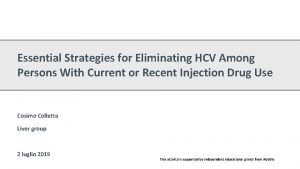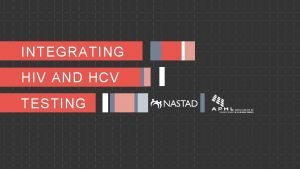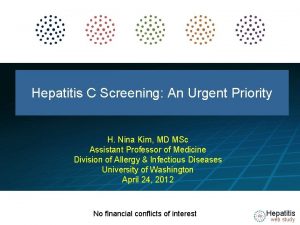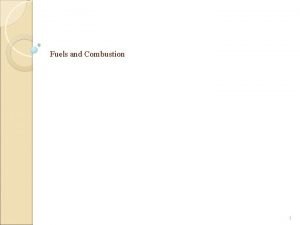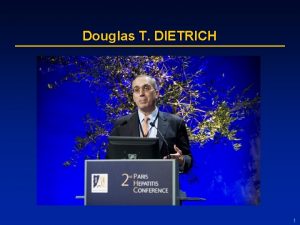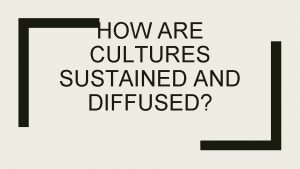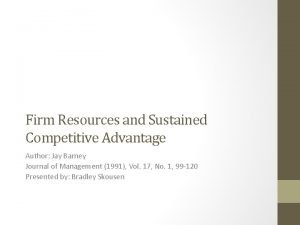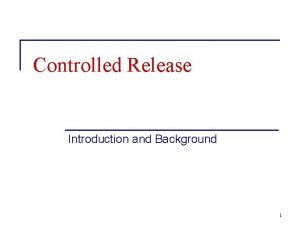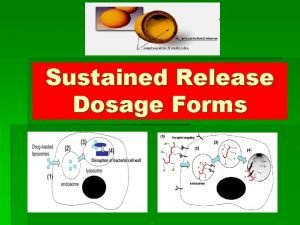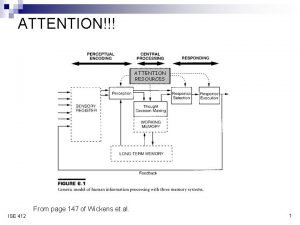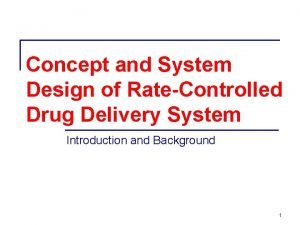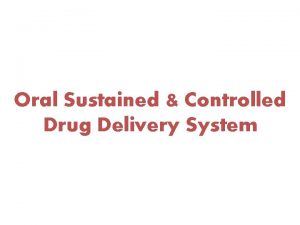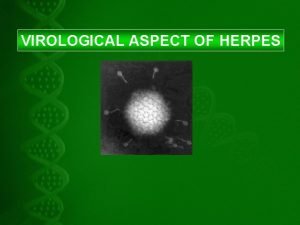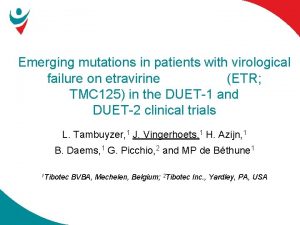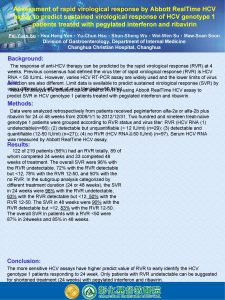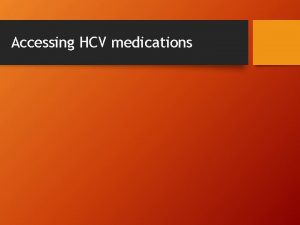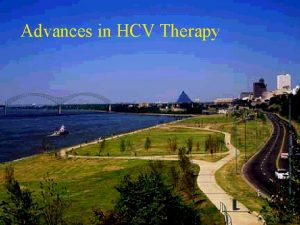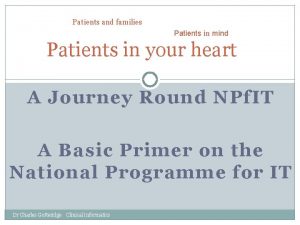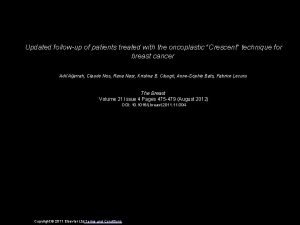SUSTAINED VIROLOGICAL RESPONSE IN HCV PATIENTS TREATED WITH
















- Slides: 16

SUSTAINED VIROLOGICAL RESPONSE IN HCV PATIENTS TREATED WITH DACLATASVIR+SOFOSBUVIR, WITH OR WITHOUT RIBAVIRIN: A LARGE FIELDPRACTICE EXPERIENCE Rodolfo Sacco Gastroenterology Unit - Pisa University Hospital on behalf of Italian Hospital Hepatologists (CLEO)* ITALY

Background

Select Competitive HCV Antivirals by Class NS 2 NS 3 NS 5 A NS 5 B NS 4 B Viral RNA Cyp B ER lumen NS 4 A • NS 3 protease • Simeprevir • Paritaprevir (ABT-450)a • Grazoprevir • Glecaprevir (MK-5172) • Voxilaprevir • Telaprevir • Boceprevir a Ritonavir boosting required. NS 5 A • Daclatasvir • Ledipasvir • Ombitasvir NS 5 B polymerase • Elbasvir Non-nucleosides • Dasabuvir (ABT-333) • Velpatasvir • Pibrentasvir Nucleos(t)ide analogs • Sofosbuvir (ABT-267) (MK-8742)

DCV: a highly selective HCV NS 5 A inhibitor 1, 2 HCV Structural proteins HCV Non-structural proteins Daclatasvir 1, 2 HCV Genome 3 • NS 5 A is a multifunctional protein that interacts with many host proteins and other viral proteins 4, 5 HCV Lifecycle Steps Direct-Acting Antiviral NS 3 NS 5 A NS 5 B Viral Entry Translation • Involvement of NS 5 A in different stages of the HCV lifecycle and modulation of host pathways makes it a key target for antiviral therapies 2, 5 Processing 6 5 Replication complex 4, 5 Replication 4, 5 Assembly 4, 5 Release 1. Gao et al. Nature. 2010; 465: 96. ; 2. Nettles et al. Hepatology. 2011; 54: 1956; 3. Chevaliez et al. In: Hepatitis C Viruses: Genomes and Molecular Biology, 2006; 4. He et al. In: Hepatitis C Viruses: Genomes and Molecular Biology, 2006; 5. Gao et al. Curr Opin Virol 2013; 3: 514; 6. Jazwinski et al. Gastroenterol Hepatol 2011; 7: 154 -162 6

DCV: a highly active replication complex inhibitor with pangenotypic coverage • In vitro studies demonstrate EC 50 values in the picomolar to low nanomolar range across all HCV genotypes 1, 2 Assay 2 EC 50 HCV replicon genotype 1 a, WT 0. 020 n. M HCV replicon genotype 1 b, WT 0. 004 n. M HCV replicon genotype 2 a, JFH 0. 071 n. M HCV replicon genotype 3 a 0. 15 n. M HCV replicon genotype 4 a 0. 012 n. M HCV replicon genotype 5 a 0. 033 n. M HCV replicon genotype 6 a 0. 054 n. M • DCV displays a therapeutic index (CC 50/EC 50) of at least 100, 000 in vitro 1 • DCV exhibits additive to synergistic effects in combination studies with 1: • NS 3 protease • NS 5 B polymerase inhibitors • Interferon 2 & ribavirin (RBV) 1. Gao M, et al. Nature 2010; 465: 96– 100; 2. Gao et al. Curr Opin Virol. 2013; 3: 514; 5

European Real-World Experiences with DCV Eurocup French ATU/Hepather/Hepa. VIH German Cohort Greek Cohort

Aims This multicenter, prospective field-practice study evaluates the DCV+SOF combination, with or without ribavirin (RBV), in HCV patients including those with advanced liver disease from 19 Italian referral centers

Methods Ø We included 620 consecutive patients fulfilling eligibility criteria of the Italian Drug Agency treated in 19 referral centers of Italy. Ø Fibrosis stage was evaluated by Transient Elastometry (METAVIR F 3>10 k. Pa, F 4>13 k. Pa). Ø Clinical cirrhosis was defined by at least one of the followings: decompensation, oesophageal varices, platelets<100, 000/mmc. Ø Patients received daily SOF+DAC for 12 (218) or 24 (392) weeks. 248 (48%) with RBV. Ø The primary efficacy endpoint was SVR 12.

Results

Baseline characteristics Patients: 620 Parameter Age, median years 60± 9 Male, (%) 63. 2 BMI, kg/m 2 24. 4± 4 Prior treatment category, (%) 40. 5 HCV RNA >2 x 106 IU/m. L (%) 39. 6 Coinfection with HIV (%) 11. 2 Coinfection with HBV (%) 1. 1 Fibrosis stage F 4, (%) 71. 5 Clinical cirrhosis, (%) 50. 4 ALT, U/L 86± 55 AST, U/L 101± 73

Cirrhosis and genotype distribution Cirrhosis by Child Genotype Distribution 400 343 350 300 250 186 200 150 68 100 23 50 0 genotype Child A Child B N/A genotype 1 genotppe 2 genotype 3 genotype 4

SVR rates and virological failures 640 SVR 12_Observed analysis 400 560 G 1: 100% GT 2: 97. 5% GT 3: 97. 2% GT 4: 100% 98% 350 480 300 400 250 Virological failures (12/608): 8 pts gt 2, previously treated with SOF+RBV; 4 pts gt 3, naive (2 HIV coinfected) 320 200 All were F 4 (6 pts clinical cirrhosis) 240 150 160 100 80 50 596/608 00 Category 1 SVR 12 All were treated without RBV

Undetectable HCV-RNA ALT and AST normalization Ø Most patients (52. 5%) reached HCV RNA below LLOQ at 4 weeks • 27. 3% reached this goal after 2 weeks • 18. 8% at the end of treatment. Ø AST and ALT levels totally recovered at 12 weeks of follow-up (26± 15 U/L and 27± 17 U/L, respectively; p<0. 001 vs baseline).

Adverse events On-Treatment Safety Summary At least one adverse events (AE), (%) 46. 0 Elevated bilirubin, (%) 30. 6 Elevated bilirubin grade 3 – 4, (%) 4. 9 Anemia (%) Pts treated with RBV (%) 27 Pts not treated with RBV (%) 18. 3

Conclusions Ø DCV + SOF ± RBV achieved a high SVR 12 rate in a large real-world population of HCVinfected patients with advanced liver disease o High SVR 12 rates regardless of HCV genotype, cirrhosis status, baseline disease characteristics o Comparably high SVR 12 rates were achieved with or without RBV Ø DCV + SOF ± RBV was generally safe and well tolerated Ø Clinical practice data from Italian network confirm the high efficacy and the pangenotypic action of this combination across a broad spectrum of patients and clinical settings

*Italian Hospital Hepatologists ( Authors of this work) * ANTONIO IZZI, VINCENZO MESSINA, LUIGI ELIO ADINOLFI, ANTONIO ASCIONE, GIORGIO BARBARINI, ANGELO BARLATTANI, GIUSEPPE CARITI, RAFFAELE COZZOLONGO, BASILIO FIMIANI, RUGGIERO FRANCAVILLA, CATERINA FURLAN, GIOVANNI GARRUCCIU, VINCENZO IOVINELLA, LUCA RINALDI, MASSIMO MARIGNANI, PAOLA BEGINI, VALERIA PACE PALITTI, ADRIANO M. PELLICELLI, GAETANO SCIFO, UMBERTO VESPASIANI GENTILUCCI
 Hcv treatment
Hcv treatment Hiv test window period
Hiv test window period Hcv treatment
Hcv treatment Hcv symptoms female
Hcv symptoms female Otto hoffman by product oven diagram
Otto hoffman by product oven diagram Douglas t dietrich
Douglas t dietrich Example of sustained attention
Example of sustained attention How are local cultures sustained
How are local cultures sustained Firm resources and sustainable competitive advantage
Firm resources and sustainable competitive advantage Entities antonym
Entities antonym Ocusert definition
Ocusert definition Sustained release
Sustained release Vocabulary of dance
Vocabulary of dance What is extended metaphor
What is extended metaphor Divided attention examples
Divided attention examples Extended release vs sustained release
Extended release vs sustained release Difference between extended release and sustained release
Difference between extended release and sustained release
